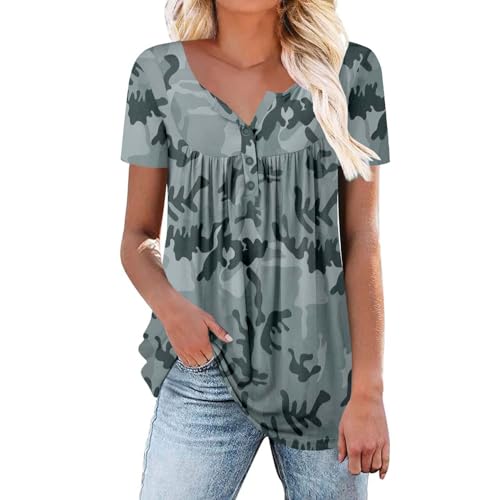When it comes to landscaping projects or outdoor renovations, knowing how much pavers come in a pallet is essential for planning and budgeting. Pavers are a popular choice for creating beautiful and durable outdoor spaces, whether it’s a patio, walkway, or driveway. Understanding the quantity of pavers you’ll get in a pallet can help you estimate the number of pallets needed for your project and ensure you have the right amount of materials on hand.

In this article, we’ll explore the typical amount of pavers you can expect to find in a standard pallet. Whether you’re a seasoned DIY enthusiast or a homeowner looking to spruce up your outdoor area, having this information at your fingertips can streamline your project planning process. Let’s dive into the world of pavers and pallets to help you tackle your next outdoor project with confidence.
Understanding Pallet Sizes and Paver Dimensions
Standard Pallet Dimensions
When considering how many pavers are in a pallet for your landscaping project, it’s crucial to understand the standard pallet dimensions. Typically, a standard pallet used for pavers measures 48 inches by 48 inches. These dimensions provide a stable and efficient way to transport and store pavers, ensuring they remain intact and organized during delivery and storage. Knowing the standard pallet dimensions helps us plan the logistics of our project effectively.
Common Paver Sizes
In addition to pallet dimensions, it’s essential to familiarize ourselves with common paver sizes. The most prevalent paver sizes include 4×8 inches, 6×6 inches, and 12×12 inches. These sizes cater to various design preferences and project requirements, offering versatility in creating unique patterns and layouts for patios, walkways, and driveways. Understanding the common paver sizes allows us to envision and execute our landscaping designs with precision and creativity.
How Many Pavers Are in a Pallet?
Calculating Paver Quantity by Type
When determining how many pavers come in a pallet, it’s crucial to consider the type and size of the pavers. The quantity can vary based on the dimensions of the pavers. For instance, standard 4×8-inch pavers often have around 500 pieces per pallet, while larger 12×12-inch pavers may have 100 pieces or fewer. Knowing the specific dimensions of the pavers you’re using can help you calculate the number of pavers you’ll need for your landscaping project accurately.
Considerations for Irregular Paver Shapes
If you opt for irregular paver shapes in your design, such as hexagonal or interlocking patterns, estimating the quantity in a pallet may require a different approach. Irregular pavers can result in varying quantities per pallet due to their unique shapes and sizes. In such cases, we recommend consulting with your supplier or manufacturer to determine the number of irregular pavers in a pallet accurately. This step is crucial to ensure you order the right amount of materials for your project and minimize any potential wastage.
Benefits of Buying Pavers by the Pallet
Economical Purchasing
When it comes to procuring pavers for landscape projects, opting to buy them by the pallet can offer significant benefits. As landscape designers, we understand the importance of making cost-effective decisions without compromising on quality. Buying pavers in bulk quantities typically results in cost savings per unit compared to individual purchases. This bulk buying strategy helps us stay within budget constraints while still achieving the desired aesthetic appeal for outdoor spaces.
Streamlining Project Planning
Efficient project planning is key to the success of any landscaping endeavor, and purchasing pavers by the pallet plays a crucial role in streamlining this process. As landscape designers, we emphasize the importance of accurate material estimation and logistical planning to avoid delays and budget overruns. Buying pavers in pallet quantities allows us to precisely calculate the required amount for the entire project, reducing the risk of running out of materials mid-construction. Additionally, having all the necessary pavers on hand from the beginning facilitates smoother project progression, enabling us to focus on the creative aspects of the design without interruptions.
Tips for Handling and Storing Pallets of Pavers
Safe Unloading Practices
When it comes to receiving a pallet of pavers for our landscaping projects, ensuring safety during unloading is paramount. We emphasize the necessity of having the right equipment, such as a forklift or pallet jack, to handle the weight of the pavers effectively. By using proper lifting techniques and equipment, we not only safeguard ourselves from potential injuries but also prevent damage to the pavers, ensuring they remain in pristine condition for our project.
Long-Term Storage Tips
For landscape designers like us, proper long-term storage of pavers is essential to maintain their quality and integrity. We recommend storing pallets of pavers in a dry, well-ventilated area to prevent moisture damage and preserve their structural integrity. By keeping the pavers off the ground on pallets or racks, we can avoid contact with water and moisture, prolonging their lifespan and ensuring they are ready for use in our next landscaping endeavor.
Estimating Your Project’s Paver Needs
As landscape designers, we know the importance of accurately estimating the quantity of pavers required for a project. Understanding how much pavers in a pallet can cover is vital for effective planning, budgeting, and material estimation. Let’s delve into the details to help you estimate your project’s paver needs efficiently.
Determining Area Coverage
When estimating the number of pavers needed, we first calculate the total area to be covered. By multiplying the length and width of the project area, we can determine the square footage. Next, we consider the size of the pavers and their recommended spacing to calculate the coverage area of each individual paver. This calculation allows us to divide the total area by the coverage area per paver, giving us the approximate number of pavers required for the project.
Accounting for Waste and Accidents
In our experience, we always account for waste and accidents when estimating paver needs. It’s essential to factor in a percentage of additional pavers to accommodate cutting for edges, corners, or any mistakes during installation. We typically recommend adding around 5-10% to the total number of pavers calculated to ensure that you have enough materials to complete the project even with unexpected occurrences or irregularities in the installation process.
By following these steps and considerations, you can accurately estimate your project’s paver needs and ensure a smooth and efficient landscaping project. Remember, proper planning and attention to detail in the estimation process can save you time, money, and potential delays in the construction phase.
Conclusion
Understanding the quantity of pavers in a pallet is key for successful landscaping projects. By considering pallet dimensions, paver sizes, and material types, we can efficiently plan and budget for our projects. Buying in bulk proves to be a smart and cost-effective approach. Estimating paver needs, accounting for waste, and preparing for unexpected occurrences ensure smooth project execution. Attention to detail in the estimation process is essential for a seamless and efficient landscaping endeavor.











